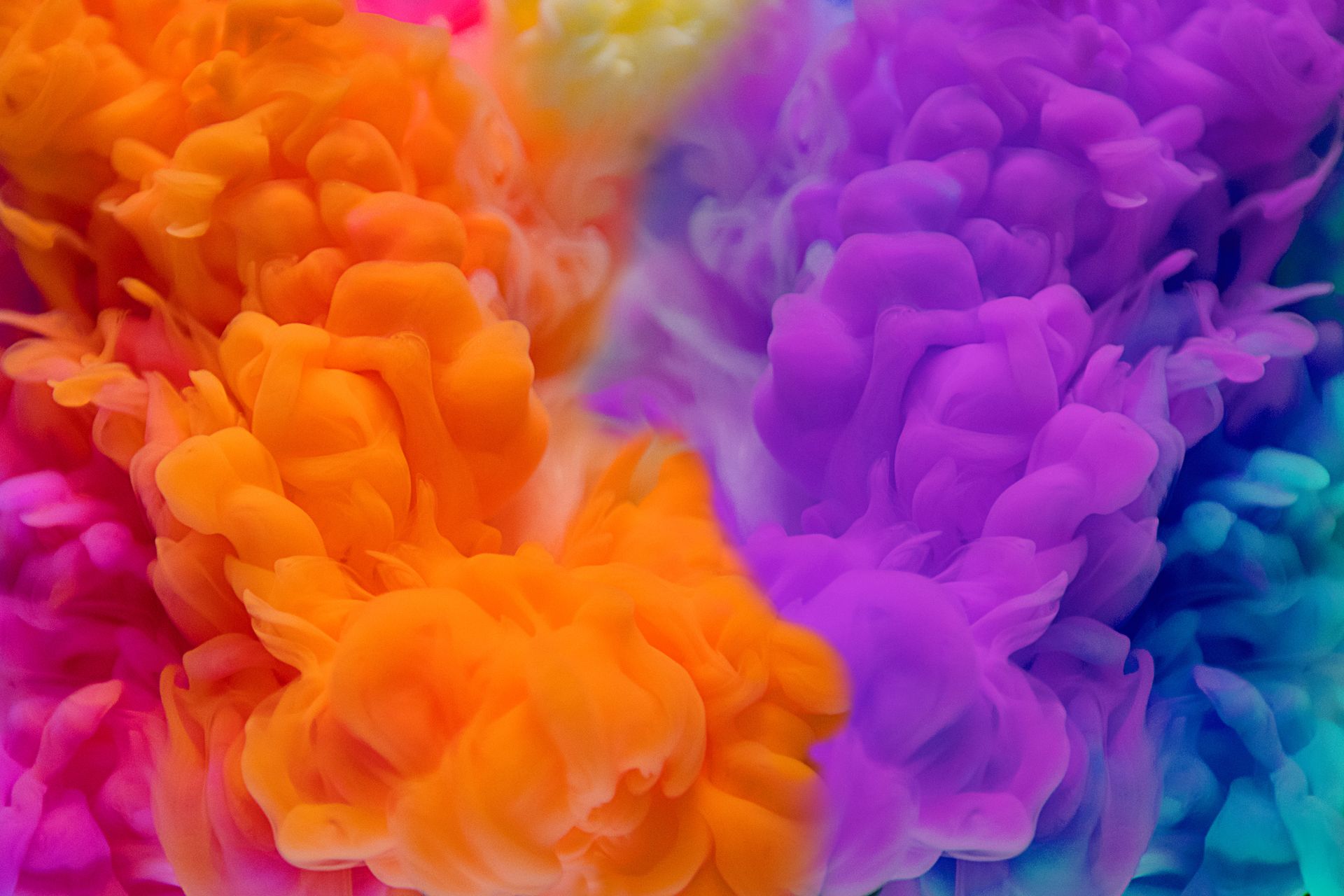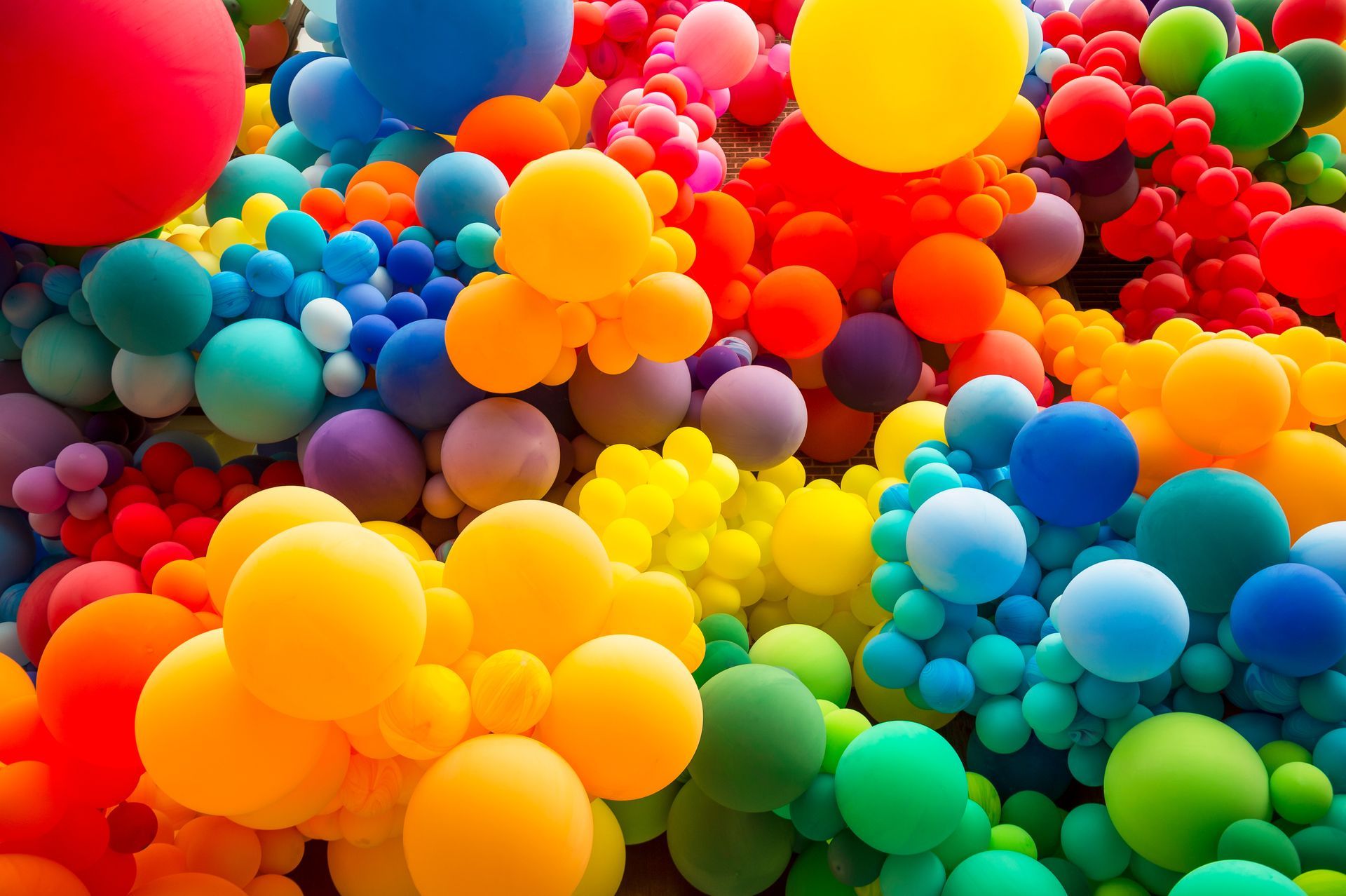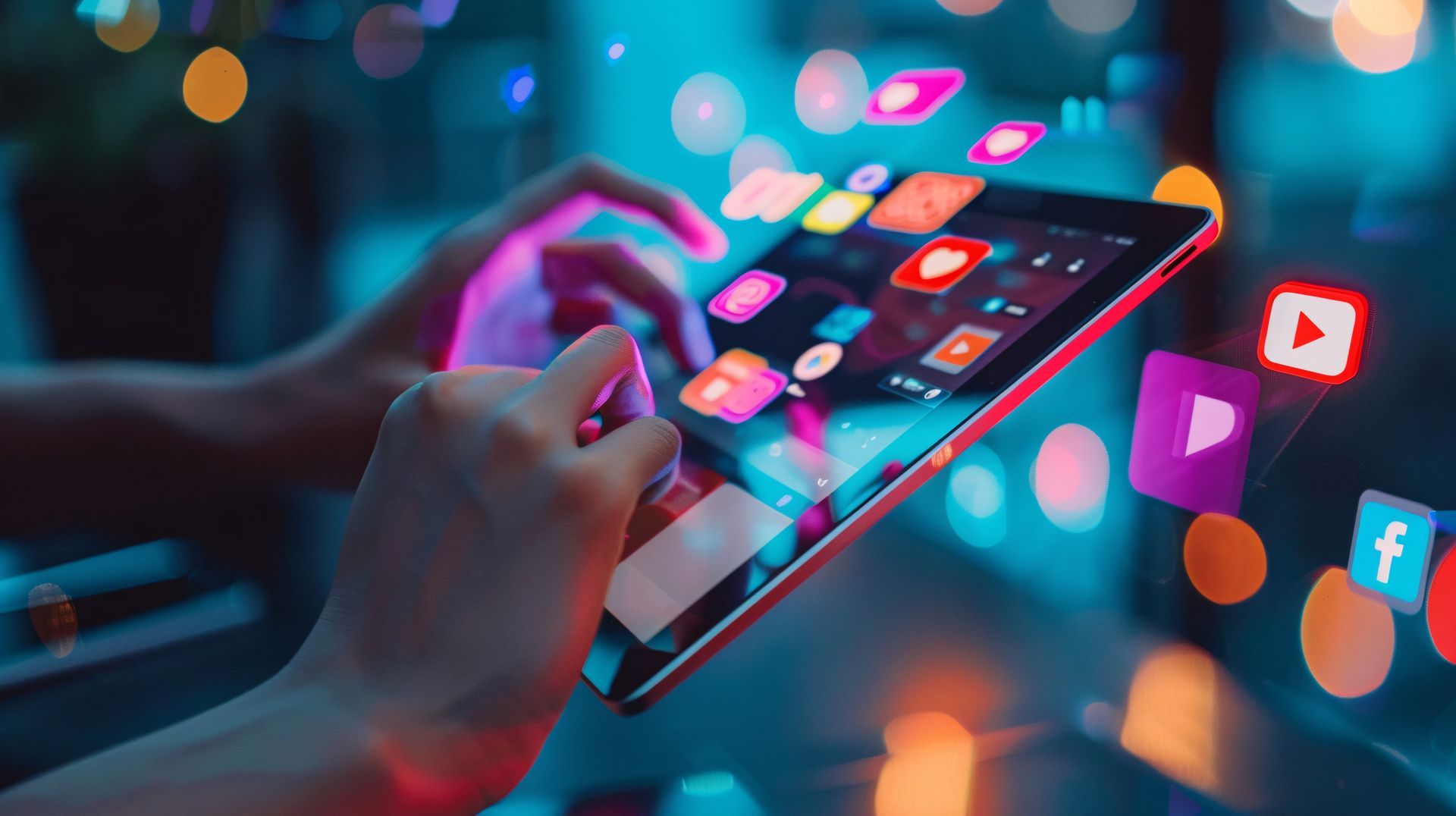The Science Behind Colours: How Psychology Shapes Design
The Science Behind Colours: How Psychology Shapes Design
In the world of design, colour plays a vital role in capturing attention and evoking emotions. Have you ever wondered why certain colours are more appealing than others? It turns out there's a fascinating science behind colour psychology, which directly influences our perception and behaviour. In this article, we will explore the intricate relationship between colour and human psychology, and how it shapes design.
Colours have the power to evoke specific emotions and trigger certain actions. For example, warm colours like red and orange are often associated with energy and excitement, while cool colours like blue and green are known for their calming and soothing effects. Understanding the psychological impact of colours can help designers effectively communicate messages and create desired responses from their audience.
By incorporating the right colours into their designs, businesses can influence consumer behaviour, improve brand recognition, and even increase sales. From logos and websites to product packaging and advertisements, every design element can benefit from a strategic understanding of colour choice.
Join us as we delve into the science behind colours and uncover the secrets of how psychology shapes design. Get ready to discover the powerful impact that colours have on our thoughts and actions.
The impact of colours on emotions and behaviour
Colours have the power to evoke specific emotions and trigger certain actions. For example, warm colours like red and orange are often associated with energy and excitement, while cool colours like blue and green are known for their calming and soothing effects. These associations are not arbitrary; they are deeply rooted in our evolutionary biology and cultural experiences.
Red, for instance, is commonly associated with danger or passion. This is because our ancestors learned to associate the colour red with blood, fire, and other potentially dangerous situations. As a result, our brains have developed a physiological response to the colour, increasing our heart rate and adrenaline levels. This explains why red is often used to grab attention and create a sense of urgency in marketing materials.
On the other hand, blue is often associated with serenity and trust. This may be due to our evolutionary history of associating the colour with clear skies and calm waters, which are generally safe and peaceful environments. Companies like Facebook and Twitter have strategically chosen blue as their brand colour to convey a sense of reliability and trustworthiness.
Understanding the psychological impact of colours can help designers effectively communicate messages and create desired responses from their audience. By leveraging the emotional power of colours, designers can create experiences that resonate with their users on a deeper level.
Colour theory and its application in design
Colour theory is a set of principles and guidelines that help designers understand how colours work together and how they can be used to create visually appealing compositions. It provides a framework for choosing colour combinations that are harmonious and balanced.
One of the fundamental concepts in colour theory is the colour wheel. The colour wheel is a visual representation of the relationships between different colours. It consists of primary colours (red, blue, and yellow), secondary colours (orange, green, and purple), and tertiary colours (created by mixing primary and secondary colours).
Complementary colours, which are opposite each other on the colour wheel (e.g., red and green), create a strong contrast and can be used to draw attention to specific elements in a design. Analogous colours, which are adjacent to each other on the colour wheel (e.g., blue and green), create a harmonious and soothing effect. Understanding these relationships can help designers create visually pleasing and balanced colour schemes.
In addition to the colour wheel, colour theory also encompasses concepts such as hue, saturation, and value. Hue refers to the specific colour, saturation refers to the intensity or purity of the colour, and value refers to the lightness or darkness of the colour. These properties can be manipulated to create different moods and effects in a design.
By applying the principles of colour theory, designers can create visually appealing and effective designs that evoke the desired emotional responses from their audience.
-
Colours and brand identity
Colours play a crucial role in shaping brand identity. When we think of certain brands, specific colours often come to mind. For example, McDonald's is associated with vibrant shades of red and yellow, while Coca-Cola is known for its iconic red and white colour scheme. These colour choices are not arbitrary; they are carefully selected to convey specific brand attributes and create a memorable brand identity.
The psychology of colour can help businesses make strategic decisions when it comes to branding. Different colours evoke different emotions and associations, and these can be leveraged to create a desired brand image. For example, green is often associated with nature and sustainability, making it a popular choice for eco-friendly brands. Yellow is associated with optimism and happiness, which is why it is often used by brands that want to convey a positive and cheerful image.
It's important to note that the cultural context can also influence colour associations. For example, in Western cultures, white is often associated with purity and innocence, while in some Eastern cultures, it is associated with mourning and death. Understanding the cultural significance of colours is crucial for businesses operating in global markets.
Choosing the right colours for your brand can help create a strong and memorable brand identity that resonates with your target audience.
-
Choosing the right colours for your website
Colour plays a crucial role in web and app design. The right colour scheme can enhance the user experience, increase engagement, and improve usability. On the other hand, a poor colour choice can confuse users, create a negative impression, and even drive them away.
When choosing colours for a website or app, it's important to consider the target audience and the intended message. Different colours evoke different emotions and associations, so it's essential to choose colours that align with the desired user experience. For example, if you want to create a sense of calm and relaxation, using cool colours like blue and green would be a good choice. On the other hand, if you want to create a sense of energy and excitement, using warm colours like red and orange would be more appropriate.
Contrast is also an important consideration in web and app design. Colours with high contrast make it easier for users to distinguish between different elements and navigate through the interface. High contrast can also improve accessibility for users with visual impairments. However, it's important to strike a balance and avoid using colours that are too harsh or overwhelming.
The psychology of colour can also be leveraged to guide users' attention and actions. For example, using a contrasting colour for call-to-action buttons can make them stand out and increase click-through rates. Similarly, using colours that are associated with positive emotions can create a more enjoyable and engaging user experience.
By carefully selecting colours and considering their psychological impact, designers can create websites and apps that not only look visually appealing but also effectively communicate messages and guide user behaviour.
-
The cultural significance of colours
Colours carry cultural significance and meaning, and these associations can vary across different cultures and societies. For example, in Western cultures, white is often associated with purity and innocence, while in some Eastern cultures, it is associated with mourning and death. Similarly, red is often associated with luck and prosperity in many Eastern cultures, while in Western cultures, it is associated with danger and passion.
When designing for a global audience, it's important to consider the cultural context and the cultural associations of different colours. Using colours that are offensive or inappropriate in a particular culture can create a negative impression and harm the brand image. Therefore, it's essential to research and understand the cultural significance of colours in the target market.
In some cases, businesses may choose to adapt their colour schemes to better align with the cultural preferences of their target audience. This can help create a more inclusive and culturally sensitive brand image. For example, McDonald's uses different colours in its logo and branding in different countries to reflect the local cultural preferences.
By considering the cultural significance of colours, businesses can ensure that their designs are culturally appropriate and resonate with their target audience.
-
Colour combinations and their effects
Colours can have a different impact when used in combination with other colours. The way colours interact with each other can create a variety of effects and evoke different emotions.
Understanding colour combinations can help designers create visually appealing and harmonious designs.
One of the most common colour combinations is the use of complementary colours. Complementary colours are opposite each other on the colour wheel, such as red and green or blue and orange. When used together, complementary colours create a strong contrast and can make elements stand out. This can be useful for drawing attention to specific elements or creating a focal point in a design.
Analogous colours, on the other hand, are adjacent to each other on the colour wheel, such as blue and green or red and orange. When used together, analogous colours create a harmonious and soothing effect. This can be useful for creating a sense of balance and unity in a design.
Monochromatic colour schemes, which use variations of the same colour, can create a sophisticated and elegant look. This can be achieved by using different shades, tints, or tones of a single colour. Monochromatic colour schemes are often used in minimalist designs or to create a specific mood or atmosphere.
Triadic colour schemes, which use three colours that are evenly spaced on the colour wheel, can create a vibrant and energetic look. This can be useful for creating designs that stand out and grab attention.
By understanding the effects of different colour combinations, designers can create visually pleasing and effective designs that evoke the desired emotional responses from their audience.

Conclusion: Harnessing the power of colour psychology in your designs
Colours have a profound impact on our thoughts, emotions, and actions. The science behind colour psychology provides valuable insights into how colours influence our perception and behavior. By understanding the psychological impact of colours, designers can create visually appealing and effective designs that resonate with their audience and elicit the desired responses.
From evoking specific emotions and shaping brand identity to guiding user behavior and creating memorable experiences, the use of colours in design is a powerful tool. By leveraging the principles of colour theory, considering the cultural significance of colours, and understanding the effects of different colour combinations, designers can harness the power of colour psychology to create impactful and successful designs.
So, the next time you embark on a design project, remember to consider the science behind colours and how they can shape the overall experience. By incorporating the right colours into your designs, you can create visual masterpieces that captivate and engage your audience. Embrace the science of colour psychology, and let it guide you in creating designs that leave a lasting impression.
 Rating
Rating

Let's have a coffee
We’d love to hear from you! Just choose the most convenient method and we’ll get back to you as soon as we can.
Tel: 01244 629 523
Email: hello@H10marketing.co.uk
© Copyright 2024 H10 Marketing Ltd. All Rights Reserved.
Company Registration No: 11030469. VAT No. 427333211. Registered Office: Attention: Sarah Hawkins, 1 Old Marsh Farm Barns Business Centre, Old Marsh Farm Road, Sealand, Deeside, Flintshire, CH5 2LY, United Kingdom.












